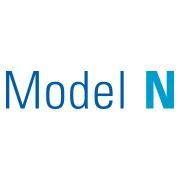Category: SaaS
Iron Mountain’s Hybrid Strategy to Capitalize on Storage-as-a-Service Opportunity
26th October
This week I had an opportunity to attend Iron Mountain’s Analyst Day focused on its digital services strategies and offerings. The event convinced me that Storage-as-a-Service is well on its way to becoming a mainstream movement on par with Software-as-a-Service (SaaS), if not greater. It also showed me how a company can build a rational hybrid services model to capitalize on a market opportunity.
The Storage-as-a-Service opportunity may seem obvious given the proliferation of data and multiplying number of consumer-oriented online storage services geared toward consumers looking for a convenient place to place their digital photos and other valuable files. But, the consumer-oriented storage services have also helped to encourage the corporate sector to take advantage of the rapidly growing array of inexpensive back-up services, such as Carbonite and Mozy, to protect their computer records and files.
The explosion of data and … Read More »
SaaS and Business Process Outsourcing Converging
22nd October
I’ve been predicting for a couple of years that the worlds of business process outsourcing (BPO) and Software-as-a-Service (SaaS) would converge. In fact, you can also add managed services to the mix.
The reason for this prediction is that the BPO companies, especially the offshore companies, can no longer sustain their labor-intensive business models. Competition for skilled labor is intensifying, driving up operating costs and creating service continuity issues as workers jump between firms.
In response, the BPO companies must shift their operations from a labor-centric to a software enabled model. SaaS represents a natural solution for this business challenge. The BPOs will use SaaS to automate their existing processes and services, to expand their service portfolios, and to extend the reach of their operations.
The BPOs will use managed services to do the same in the IT infrastructure management arena.
The clearest example … Read More »
Legacy Software Contraction and the Tugboat Strategy
14th October
The consolidation of the legacy software market continued this past week with SAP’s announced plans to acquire Business Objects, followed by Oracle’s announcement that it intends to buy BEA Systems.
These transactions clearly indicate that the traditional, on-premise software market is undergoing fundamental changes. The most obvious driver of the latest announcements is the growing importance of business intelligence (BI) and analytics as a key ingredient in any meaningful enterprise application.
In an ideal world, these acquisitions would mean that customers no longer have to carry the burden of integrating these capabilities into their enterprise software environments. Instead, it would be logical to expect the business intelligence and analytics capabilities to become a ‘plug and play’ component of the SAP and Oracle’s software portfolios. However, it is more likely that these acquisitions will simply make their software solutions even more complex to … Read More »
Reflections on Dreamforce, ZD's Channel Summit and Verio's Partner Event
23rd September
Waiting for a delayed flight to Chicago from Vegas, as I try to make my way home to Boston, is an opportune time to recap a week of travels across the Software-as-a-Service (SaaS) and managed services landscape.
This past week began at Salesforce.com’s annual Dreamforce user conference. It was another lovefest that attracted a record crowd of over 7000 users, partners, press and analysts, up from fewer than 5000 a year ago. The 40% growth in total attendees was eclipsed by a tripling in the number of partners showcasing their on-demand capabilities, despite a big increase in the price for booth space.
The focal point of the event was Salesforce.com’s introduction of its new Platform-as-a-Service (PaaS), called force.com. The company also introduced a user interface on-demand solution (IaaS), visualforce.com. (Click here, to read THINKstrategies’ whitepaper regarding the new PaaS.)
These announcements are the … Read More »
THINKstrategies Launches SaaS and Managed Service Provider Readiness Assessment Services
10th September
I’m pleased to announce that THINKstrategies unveiled today a new set of packaged services aimed at helping Software-as-a-Service (SaaS) and Managed Service providers (MSPs) ensure that they have properly designed and can reliably deliver their web-based solutions.
Our new Readiness Assessment Services (RAS) have been developed in response to the rapid rise in demand for SaaS and Managed Service alternatives to traditional, packaged applications and network/system management (NSM) solutions among end-user organizations of all sizes. This demand is attracting a rapidly expanding array of start-ups and established vendors attempting to capitalize on this new market opportunity.
We at THINKstrategies have found that many of these companies are not fully prepared to succeed in the SaaS and managed services markets because they’ve under-estimated the organizational, operational, sales, marketing and financial requirements of these service-oriented, subscription-based businesses.
Despite the growing interest and acceptance of SaaS … Read More »
More Companies Capitalizing on Channel Opportunities in the SaaS Market
21st August
A little over a year ago, I contributed a commentary to eWeek’s Channel Insider, entitled “On-Demand a Boon for the Channel”, that stated the Software-as-a-Service (SaaS) movement doesn’t have to be the death-kneel for channel organizations.
At that time, many resellers and integrators feared that SaaS would ‘dis-intermediate’ them because of its direct sales and simpler deployment characteristics. There is no question that these attributes will certainly disrupt the traditional business models of many resellers and integrators who capitalized on the complexities of the legacy applications in the past. However, there is still plenty of complexity in today’s enterprise-oriented SaaS solutions to give innovative resellers and integrators a new round of business opportunities to pursue.
Just as in the past, customization and integration remain challenges in the new world of enterprise SaaS solutions. A year ago, I discussed in the eWeek article … Read More »
What Killed Klir Technologies?
17th August
One of the energizing characteristics of the IT industry in general, and the Software-as-a-Service (SaaS) market in particular, is the continuous change. Part of the change process is the constant cycle of new companies entering the market and established companies disappearing.
Although many of these companies will come and go with little fanfare, occasionally the meaning of a promising young company that fails to succeed is worth extra consideration. Klir Technologies was such a company.
I was notified of the company’s closure by its CEO/Co-Founder, James Maiocco, at the time of its announcement on August 1, but have been unable to comment on this event until now because of other commitments.
Klir sought to solve companies’ IT performance management needs via a SaaS solution. While Klir had been in business since 2000, it started to attract serious attention in 2006 when it decided … Read More »
Bridging the Gap Between the On-Demand and On-Premise Software Worlds
24th July
Callidus Software Inc. announced todaythat it has been certified to offer its TrueComp® Suite on Salesforce.com’s AppExchange.This announcement isn’t likely to generate bold headlines in the business or industry trade press. But, I believe it is a significant bellweather for the software industry and good news for organizations who have been worried that they’d have to make an either/or decision when selecting on-demand versus on-premise software solutions.
Until recently, the rapid rise of Software-as-a-Service (SaaS) as a radical movement to displace legacy applications. As a consequence, SaaS was seen as a fundamental threat to the long-term viability of the independent, or as I prefer to say, “incumbent” software vendors (ISVs).
While on-demand, SaaS solutions represent a real challenge for legacy software vendors, it is no longer a simple battle of good (on-demand) versus evil (on-premise). Instead, both parties are recognizing that they … Read More »
HP and BMC Acquisitions Highlight IT Process Automation
23rd July
The acquisition hit parade in the IT management arena continues. On Friday, BMC purchased RealOps and on Monday HP acquired Opsware (and Neoware).
The similarilities between the two acquired companies is noteworthy, as is the opportunity for the acquirors to market their new assets to enterprises, as well as managed service providers (MSPs).
IT management has always been an issue of concern, but until recently it has never been a lucrative market for network and system management (NSM) platforms and tools. As IT becomes more pivotal to business operations and optimizing the performance of IT becomes more essential for business success, the importance of effective IT management has grown.
It has become increasingly apparent that enterprises, as well as MSPs, need as many tools as they can find to help them automate as much of the IT management function as possible. Market studies … Read More »
The SunGard Acquisition of VeriCenter and the Reshaping of the Hosting Industry
17th July
Yesterday’s announcement that SunGard intends to acquire VeriCenter clearly indicates that the competitive landscape in the hosting business is rapidly changing.
Not only is this another indication of industry consolidation and the growing role of private equity firms in the IT services sector, it is also another example of how the managed and Software-as-a-Service worlds are converging.
The first message that this transaction sends to any hosting company that hopes to be a market leader is that they can no longer depend on the simple annuity of managed server and co-location services. Instead, hosting industry leaders will need to offer a broader portfolio of managed and SaaS capabilities in order to become a strategic source for their enterprise customers.
Sungard is a perfect example of the power of private equity. On March 29, 2005 the company was acquired by a consortium of seven … Read More »




